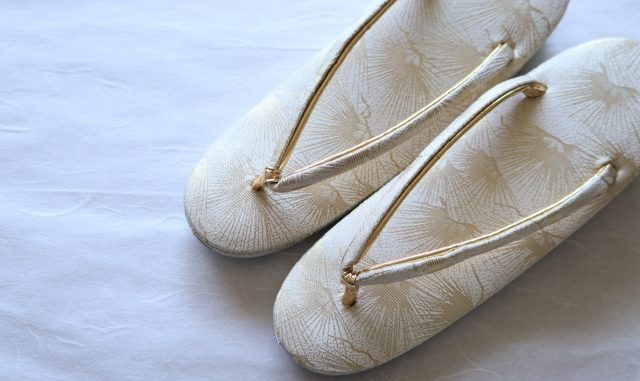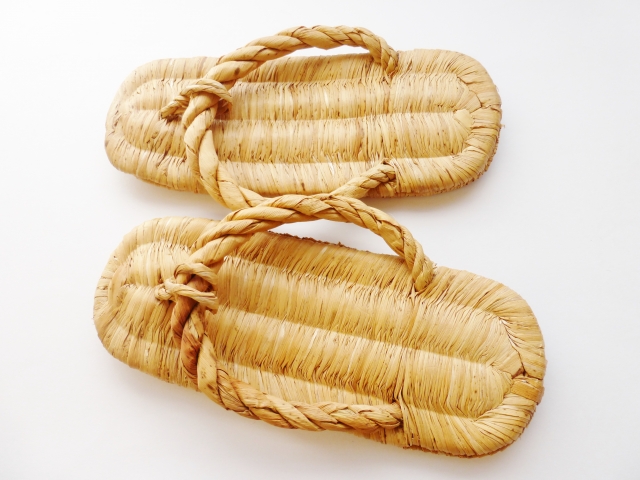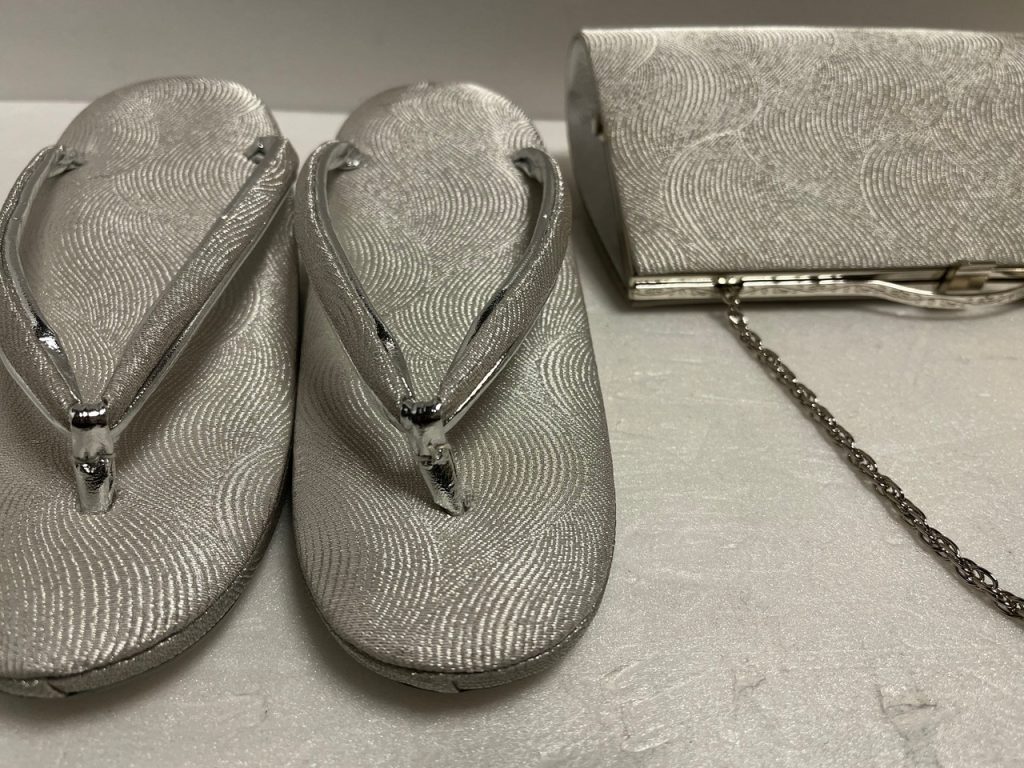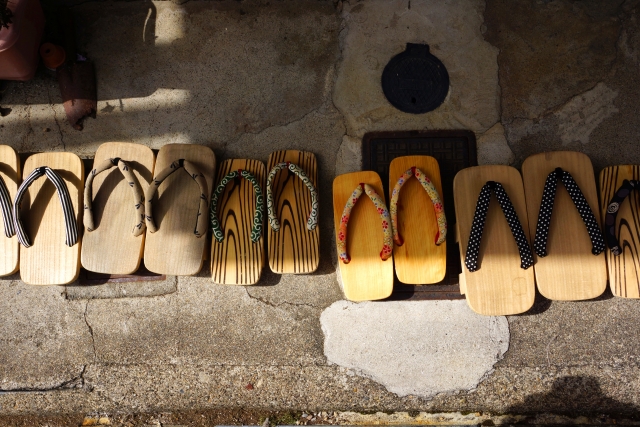
Japanese 草履【ZOURI】 are a type of traditional footwear worn with kimonos and traditional Japanese clothing.
▶For more information on 下駄【GETA】, click here.
Traditional zouri were woven from plant fibers such as い草【IGUSA(rush)】 and 藁【WARA(straw)】, but nowadays they are made from a variety of materials such as leather, cloth, vinyl, and urethane.

As they do not wrap around the foot, they are breathable and well-suited to Japan’s hot and humid climate.
They have a flat sole and a string-like part called a 鼻緒【HANAO(thong)】 that branches out from a support in the center of the front and keeps the foot from coming off the base. The support part of the thong is placed between the big toe and index toe when wearing zouri.

Why are wearing zori good for your health?
The area between the big toe and index toe is home to many important acupressure points for the eyes, brain, neck, and shoulders, which many modern people suffer from, such as brain and eye fatigue and stiff shoulders. Every time you walk in zori with the hanao (thong) between your big toe and index toe, you can stimulate these points.
To avoid pain caused by rubbing against the thong, leave some space between the thong and your toes to reduce friction.
For this reason, the correct way to wear zori is for your heel to extend about 1-2 cm beyond the base.
(If the thong feels too tight, gently pull it open before putting it on to make it easier to fit your foot.)
When walking in zori, using your entire foot helps to develop proper calf muscles, which is said to be beneficial to your health.
Differences from zori:
Zori, a similar type of footwear, are often worn with formal kimono and are paired with tabi socks. Their soles are made of soft materials like cork, leather, or cloth.
Geta are more casual, everyday footwear, often worn barefoot with summer attire like yukata and jinbei. Recently, some young people have begun pairing them with jeans.


Structures of Geta:
The thong secures the foot, increasing stability. Furthermore, the “teeth” at the base lift the foot from the ground, protecting it from moisture and adapting to uneven surfaces.
Why wearing zori is good for your health:
The support part of the thong is held between the big toe and index toe.
The area between the big toe and index toe is home to many very important acupressure points for the eyes, brain, neck, and shoulders, which many modern people suffer from, such as brain and eye fatigue and stiff shoulders. These points can be stimulated every time you walk in your zori sandals with the thong between them.
When walking in geta, using your entire foot helps to develop appropriate calf muscles, which is said to be good for your health.
Tips for wearing Geta properly:
To avoid pain caused by the thong rubbing against your feet, leave a gap between the thong and your toes to reduce friction.
For this reason, the correct way to wear geta is for your heel to extend about 1-2 cm beyond the base.
(If the thong feels too tight, gently pull it open before putting them on to make it easier to fit your feet.)


Leave a Reply